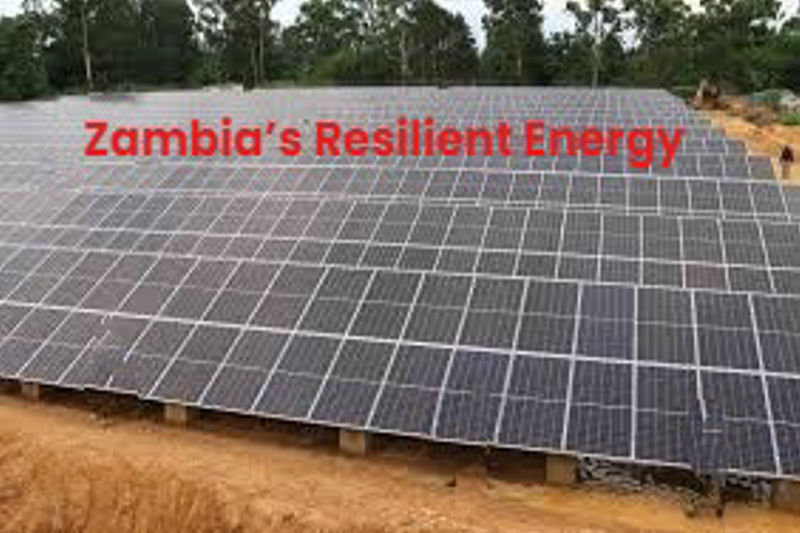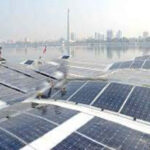Introduction
Zambia, a landlocked country in Southern Africa, has long relied on hydropower as the backbone of its energy supply. While this has provided relatively stable electricity for decades, climate change-induced droughts and increasing demand have exposed the fragility of this dependence. The solution? A resilient energy future anchored in the diversification of renewable energy sources. By expanding into solar, wind, biomass, and geothermal power, Zambia can secure sustainable energy, drive economic growth, and shield itself from the volatility of climate and global energy markets.
The Perils of Over-Reliance on Hydropower
Hydropower currently supplies over 80% of Zambia’s electricity, with the Kariba Dam alone contributing a significant portion. However, this dependence has proven risky. Prolonged droughts, like those in 2015-2016 and 2019-2020, led to severe power shortages, forcing Zambia to implement load-shedding that crippled industries and households.
Climate models predict increasingly erratic rainfall patterns, meaning hydropower will become even less reliable. If Zambia continues to lean heavily on this single source, it risks recurring energy crises that stifle development. Diversification is essential to resilience; it is not merely a choice.
The Untapped Potential of Solar Energy
Zambia has some of the highest amounts of solar irradiation in the world, with up to 3,000 hours of sunshine annually. Despite this, solar energy accounts for less than 3% of the nation’s electricity. Increasing solar investments could revolutionize Zambia’s energy economy.
This technology’s feasibility is shown by large-scale solar farms like the Bangweulu Solar Plant (60 MW). Beyond utility-scale projects, decentralized solar solutions—like rooftop panels and mini-grids—can electrify rural areas where grid extension is costly. Solar energy is not only abundant but also quick to deploy, providing a fast-track solution to energy deficits.
Harnessing Wind Power for Consistent Supply
While Zambia’s wind potential is less pronounced than its solar resources, strategic locations—particularly in the Southern and Eastern provinces—show promising wind speeds for energy generation. Preliminary studies suggest that wind farms could complement solar by providing power during cloudy periods and at night.
Countries like Kenya and South Africa have successfully integrated wind into their grids, proving that with the right policies, Zambia could follow suit. Wind energy diversification would add another layer of stability to the national power supply.
Biomass: Turning Waste into Energy
Zambia’s agricultural sector produces vast amounts of organic waste—from crop residues to livestock manure—which can be converted into biogas and biofuels. Biomass energy offers a dual benefit: it provides renewable electricity while addressing waste management challenges.
Small-scale biogas digesters, already used in some rural communities, can be expanded to power schools, clinics, and farms. Larger biomass plants could feed into the national grid, reducing reliance on imported fossil fuels during dry seasons.
Geothermal: The Overlooked Renewable
Zambia is located close to the East African Rift, which has substantial geothermal potential, even if geothermal exploration in the country is still in its infancy. Initial surveys in the Northern and Luapula provinces indicate possible geothermal reservoirs.
Investing in geothermal research could unlock a baseload power source—unlike solar and wind, geothermal provides continuous energy, unaffected by weather. Kenya generates nearly 50% of its electricity from geothermal, showcasing what Zambia could achieve with targeted investment.
Economic and Environmental Benefits of Diversification
1. Energy Security & Reliability
A diversified renewable energy portfolio ensures that shortfalls in one source can be offset by others. This reduces vulnerability to climate shocks and global fuel price fluctuations.
2. Job Creation & Industrial Growth
Jobs in manufacturing, installation, and maintenance are generated by renewable energy projects. A thriving green energy sector could attract foreign investment and spur local industries.
3. Lower Carbon Emissions
Shifting from diesel generators and coal backups to clean energy helps Zambia meet its climate commitments under the Paris Agreement while reducing air pollution.
4. Rural Electrification & Poverty Reduction
Decentralized renewables can bring power to remote areas, improving education, healthcare, and small-business opportunities.
Policy Recommendations for a Renewable Future
To accelerate renewable diversification, Zambia must:
Enhance Regulatory Frameworks: Streamline licensing and offer incentives for private renewable investments.
Boost Public-Private Partnerships (PPPs): Collaborate with developers to fund large-scale solar, wind, and geothermal projects.
Invest in Grid Modernization: Upgrade transmission infrastructure to handle variable renewable inputs.
Promote Research & Development:Fund studies on wind, biomass, and geothermal potential.
Feed-in tariffs should be put into place to ensure that independent renewable energy providers receive competitive prices.
Conclusion
Zambia stands at a crossroads: continue relying on an increasingly unreliable hydropower system or embrace a diversified renewable energy future. Solar, wind, biomass, and geothermal offer not just backup solutions but pathways to energy independence, economic growth, and climate resilience. By acting now, Zambia can power its future sustainably—ensuring that the lights stay on, industries thrive, and communities prosper for generations to come.
The time to diversify is today. The benefits are clear, the technology is available, and the demand is urgent. Zambia’s resilient energy future must be renewable—and it must start now.


